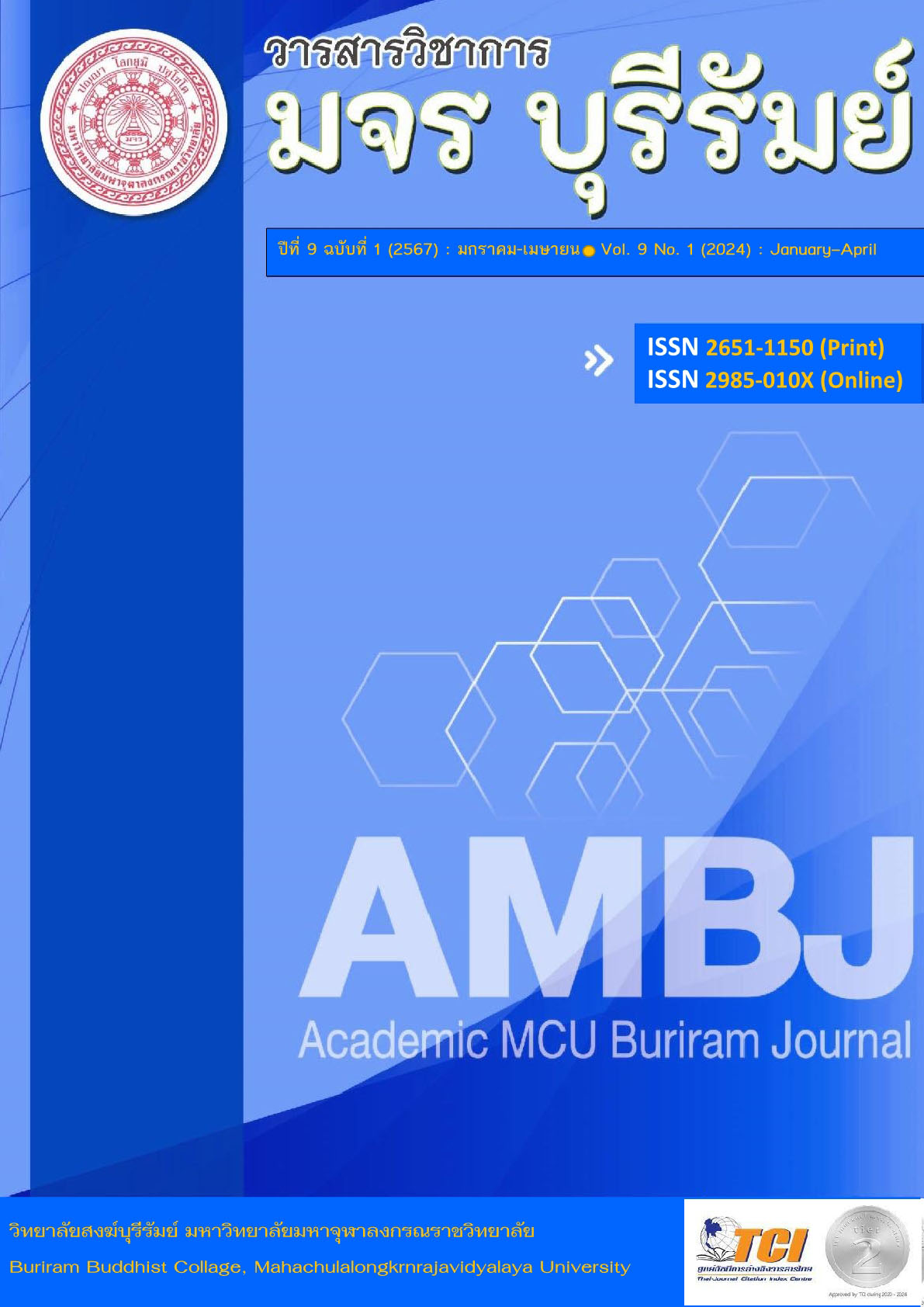Sustainable Water Management Guidelines Underground Water Bank Case Study Lan Ba Subdistrict Lom Sak District, Phetchabun Province
Keywords:
Guidelines, Sustainable Water Management, Underground Water BanksAbstract
The purpose of this research were: 1) To study water management using the underground water bank model in Lan Ba Subdistrict, Lom Sak District, Phetchabun Province. Obstacles in the implementation of groundwater bank management In the Lan Ba subdistrict area 3) To study ways to manage water in a balanced and sustainable manner using the groundwater bank model. To solve the drought problem and solve the flood problem. Lan Ba Lom Sak District, Phetchabun Province This research is a qualitative research.
The research results found that:
1. Water management using the underground water bank model in the area of Lan Ba Subdistrict, Lom Sak District, Phetchabun Province. Using the method of filling groundwater with closed ponds, totaling 45 ponds along the Pa Sak River. This is a closed water filling pond that can only be used for filling. and how to make a closed underground water bank in the community to solve road flooding.
2. Problems and obstacles in the operation of groundwater management in the form of an underground water bank, there are 4 issues: 1) People lack knowledge and understanding about the operation of storing water in the form of an underground water bank. 2) Difficulty in moving large machines big. 3) Problems with the amount of groundwater decreasing 4) Budget constraints
3. There are 3 approaches to managing water in a balanced and sustainable manner using the underground water bank model: 1) making a closed pond system in a residence, 2) making a closed pond system with drainage in the community, 3) making a closed pond system in Area along the Pa Sak River.
References
ปกิตน์ สันตินิยม. (2564). รูปแบบการบริหารจัดการธนาคารน้ำใต้ดินเพื่อการแก้ไขปัญหาภัยแล้ง และน้ำท่วมอย่างยั่งยืนในจังหวัดอุบลราชธานี. ดุษฎีนิพนธ์ปรัชญาดุษฎีบัณฑิต สาขาวิชารัฐประศาสนศาสตร์. บัณฑิตวิทยาลัย: มหาวิทยาลัยมหาจุฬาลงกรณราชวิทยาลัย.
พินิจ ลาภธนานนท์. (2564). การบริหารจัดการแหล่งน้ำชุมชนเพื่อการมีน้ำใช้อย่างสมดุลและยั่งยืน (ธนาคารน้ำใต้ดิน) จังหวัดร้อยเอ็ด. รายงานวิจัยฉบับสมบูรณ์. มหาวิทยาลัยมหาจุฬาลงกรณราชวิทยาลัย.
พินิจ ลาภธนานนท์ และเร่งรัด สุทธิสน. (2565). ศูนย์เรียนรู้ธนาคารน้ำใต้ดินมูลนิธิพระนิเทศศาสนาคุณ สังฆพัฒนาเพื่อสร้างชุมชนสุขภาวะ. พิมพ์ครั้งที่ 2. นนทบุรี: นิติธรรมการพิมพ์.
สุภางค์ จันทวานิช. (2552). การวิเคราะห์ข้อมูลในการวิจัยเชิงคุณภาพ. กรุงเทพมหานคร: สำนักพิมพ์แห่งจุฬาลงกรณ์มหาวิทยาลัย.
องค์การบริหารส่วนตำบลลานบ่า. (2566). แผนพัฒนาตำบล พ.ศ. 2561-2565. เข้าถึงได้จาก https://www.lanba.go.th/plan/local (สืบค้นเมื่อ 8 กันยายน 2566).
De Fraiture, C., & Wichelns, D. (2010). Satisfying future water demands for agriculture. Agricultural Water Management, 97(4), 502–511.
Downloads
Published
How to Cite
Issue
Section
License
Copyright (c) 2024 Academic MCU Buriram Journal

This work is licensed under a Creative Commons Attribution-NonCommercial-NoDerivatives 4.0 International License.
ทัศนะและความคิดเห็นที่ปรากฏในบทความวารสารฉบับนี้ถือเป็นความรับผิดชอบของผู้เขียนบทความนั้น ไม่ถือเป็นทัศนะและความรับผิดชอบของบรรณาธิการ





